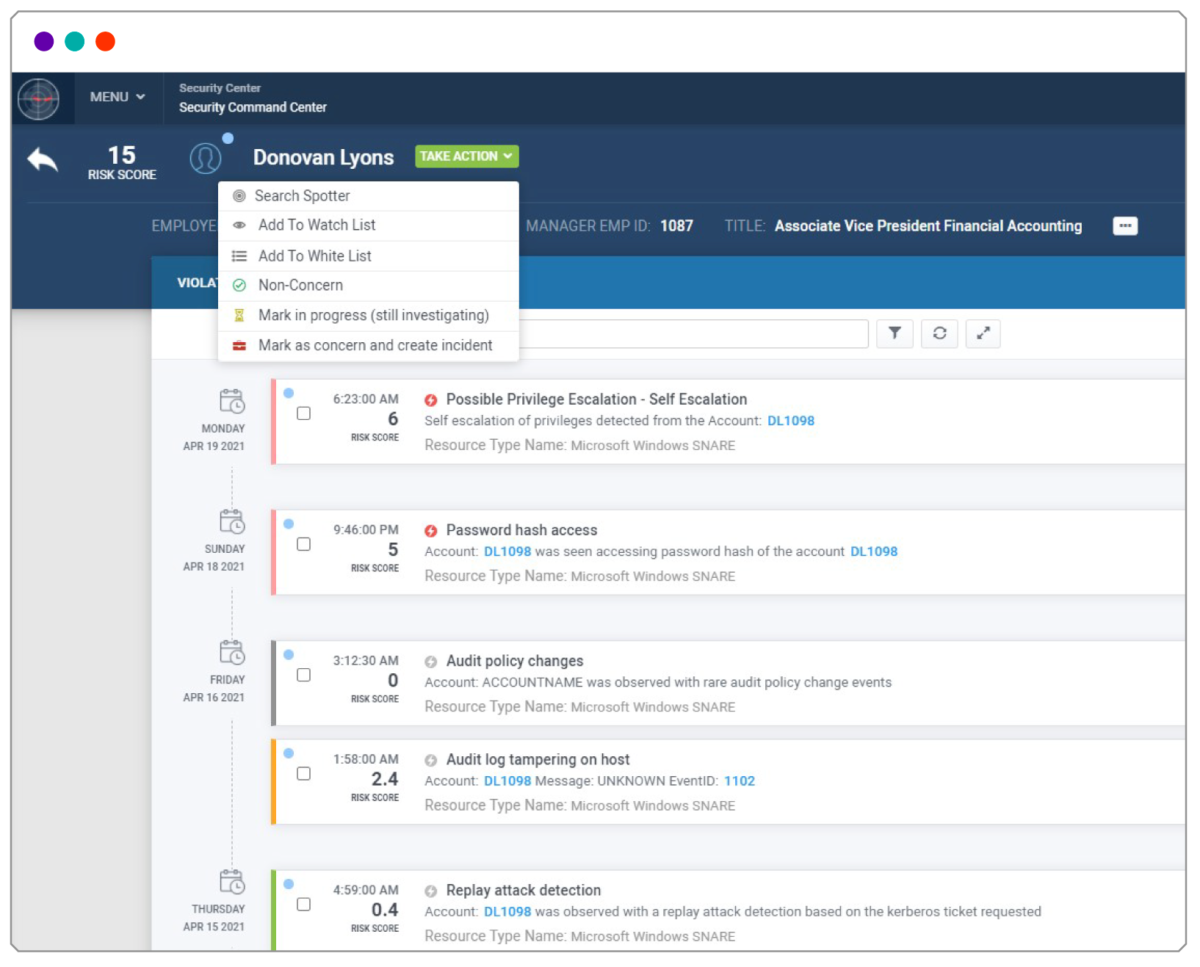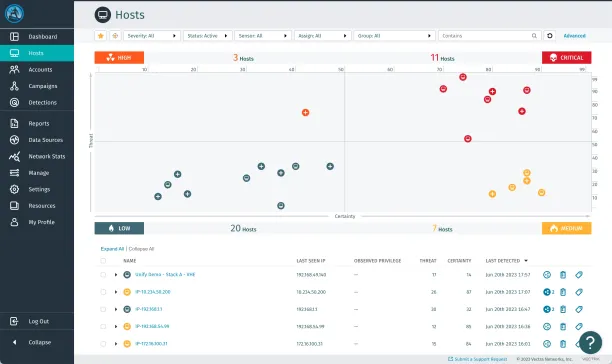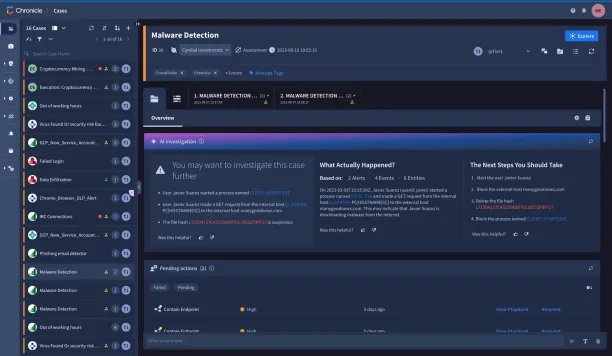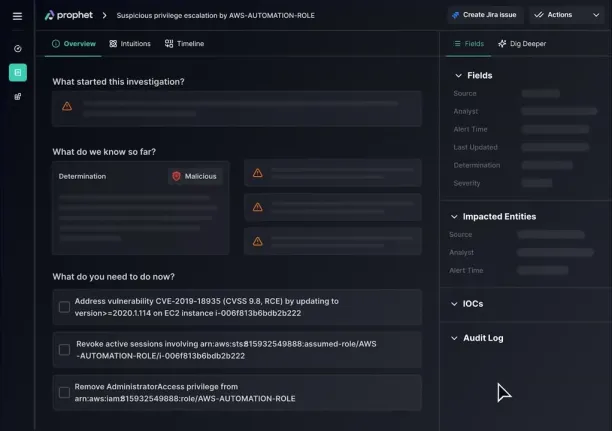AI capabilities in Security Operations Centers (SOCs) represent a fundamental shift from reactive threat hunting to proactive, intelligent security orchestration. Modern AI-powered SOCs leverage multiple generations of artificial intelligence to automate detection, investigation, and response processes. Three evolutionary phases shaped current AI SOC implementations:
Gen 1 (2010-2015) – Traditional AI analytics: Early SOC implementations used rule-based systems and classical machine learning for structured data analysis. These systems excelled at pattern recognition and anomaly detection for:
- Identifying unusual login attempts and network behaviors
- Correlating log events and flagging known attack signatures
- Processing structured security data with high accuracy
Gen 2 (2020-2023) – Generative AI integration: SOCs began incorporating GenAI capabilities that could understand context. These systems introduced natural language processing and content generation for:
- Creating incident summaries and actionable reports
- Assisting with detection rule creation and script writing
- Generating synthetic attack scenarios for training and red teaming
Gen 3 (2023 to date) – Autonomous AI agents: The latest generation deploys AI agents capable of multi-step reasoning and autonomous action execution. These systems provide end-to-end security operations without human intervention through:
- Tier 1 (Autonomous triage): Complete alert investigation and evidence gathering
- Tier 2 (Response orchestration): Cross-platform remediation and system isolation
- Tier 3 (Strategic operations): Predictive threat hunting and infrastructure hardening
| Aspect | AI Analytics (Gen 1) | GenAI (Gen 2) | AI Agents (Gen 3) |
|---|---|---|---|
| Approach | Rule-based pattern recognition | Contextual understanding and content generation | Autonomous decision-making |
| Decision-Making | Identifies patterns and anomalies, provides alerts | Generates insights, summaries, and recommendations | Executes autonomous actions |
| Human Involvement | High oversight | Moderate oversight | Minimal oversight |
| Actions | Generates alerts, dashboards | Creates reports and summaries | Automates complete workflows |
| Capabilities | Static rule execution, threshold monitoring | Natural language interaction, content synthesis | Multi-step reasoning |
AI SOC technologies and platforms
Gen 1 (mid-2010s): AI analytics in SOC
Early SOC platforms leveraged traditional machine learning and rule-based systems for threat detection and anomaly identification.
Securonix UEBA
Securonix offers user and entity behavior analytics, powered by machine learning, for identifying insider threats.
Key features:
- Advanced user and entity behavior analytics
- Machine learning-powered anomaly detection
- Insider threat detection and investigation
- Risk scoring and behavioral baseline analysis

Vectra AI
Vectra specializes in AI-powered network detection and response, focusing on behavioral analytics to identify advanced threats.
Key features:
- AI-powered behavioral threat detection
- Advanced persistent threat (APT) identification
- Network-focused security monitoring
- Attacker behavior analysis, rather than just indicators

Intezer Analyze
Intezer provides AI-powered malware analysis and incident response capabilities designed explicitly for SOC environments.
Key features:
- Genetic malware analysis using AI code reuse detection
- Automated threat classification and response
- Integration with existing SIEM and security platforms
- Advanced file and memory analysis capabilities

Gen 2 (2020-2023): GenAI in SOC
SOC platforms began incorporating generative AI capabilities for natural language interaction, report generation, and contextual analysis.
Google Chronicle
Google’s cloud-native security analytics platform offers AI-powered threat hunting and investigation capabilities, backed by massive data processing power.
Key features:
- Cloud-native security analytics and operations
- AI-enhanced threat hunting capabilities
- Integration with Google Cloud security services
- Scalable data processing and analysis

Cynet 360 AutoXDR
Cynet offers an all-in-one, AI-powered extended detection and response platform that combines multiple security functions into a single, integrated solution.
Key features:
- Automated extended detection and response (XDR)
- AI-powered threat hunting and investigation
- Unified platform approach to security operations
- Managed or self-operated deployment options
Gen 3 (2023 to date): AI agents in SOC
The latest generation of SOC platforms deploys autonomous AI agents capable of managing the entire incident lifecycle without human intervention.
Dropzone AI
Dropzone AI positions itself as “the world’s first AI SOC analyst,” providing autonomous alert investigation powered by generative AI to eliminate alert fatigue and reduce MTTR by 90%.
Key features:
- Autonomous incident triage and investigation
- Natural language incident summaries and reports
- Automated evidence collection and correlation
- Integration-agnostic approach supporting multiple security tools
Prophet Security
Prophet Security’s AI SOC Platform uses agentic AI (AI SOC Agents) to automate alert triage, investigations, and response, accelerating and improving SecOps.
Key features:
- Agentic AI SOC agents for autonomous operations
- Advanced alert triage and prioritization
- Automated incident investigation workflows
- Integration with existing security infrastructure

Radiant Security
Radiant Security is a SecOps platform that enables the SOC to leverage the power of AI to streamline and automate analyst workflows, dramatically boosting SOC analyst productivity and detecting significantly more real attacks.
Key features:
- AI-powered SOC co-pilot for analyst assistance
- Automated alert triage and incident investigation
- Deep investigation capabilities for every incident
- Workflow automation for enhanced productivity
Real-life examples
Real-life case study 1: JPMorgan Chase
JPMorgan Chase implemented a comprehensive AI-powered SOC to combat sophisticated fraud attempts across their global banking operations.6
Implementation:
- Integration of over 250 data sources across global banking operations
- Deployment of behavioral biometrics and advanced machine learning algorithms
- Implementation of real-time fraud detection across all customer touchpoints
- Creation of custom AI models for synthetic identity fraud detection
Results:
- 78% reduction in false positives for fraud alerts
- Detection of previously unknown fraud patterns, including synthetic identity schemes
- Enhanced customer experience with reduced legitimate transaction blocks
Real-life case study 2: Cleveland Clinic
Cleveland Clinic, one of America’s largest healthcare networks, deployed an AI-powered SOC to protect patient data and critical medical systems following the surge in healthcare-targeted cyberattacks.7
Implementation:
- Protection of over 60,000 endpoints, including medical devices and workstations
- Implementation of healthcare-specific threat monitoring
- Automated compliance reporting for HIPAA and other regulations
- 24/7 monitoring of critical care systems and life support equipment
Results:
- Reduced security operations workload through intelligent automation
- Achieved continuous HIPAA compliance with automated monitoring
- Incident response time reduced from 6 hours to 18 minutes
- Zero successful breaches of patient health information
Real-life case study 3: Shopify
Shopify implemented an AI SOC solution to protect over 1.7 million merchant accounts and handle massive traffic spikes during major shopping events.8
Implementation:
- Real-time security monitoring for over 1.7 million merchant stores
- Implementation of advanced account takeover prevention systems
- Integration with payment processing systems and PCI DSS compliance monitoring
Results:
- Real-time analysis of over 10 million login attempts per hour during peak traffic
- Automated blocking of 99.2% of malicious activities within 30 seconds
- Prevention of account takeover attacks across 1.7 million merchant accounts
- Maintained sub-second response times during peak load periods
Real-life case study 4: Siemens
Siemens AG implemented AI SOC technology across its global manufacturing facilities to protect operational technology (OT) networks and industrial control systems while maintaining production continuity.9
Implementation:
- Unified IT/OT security monitoring across 200+ global manufacturing facilities
- Protection of over 50,000 operational technology assets
- Integration with industrial IoT platforms and predictive maintenance systems
- Implementation of ICS/SCADA-specific threat detection capabilities
- Compliance monitoring for industrial cybersecurity standards
Results:
- Detection and prevention of insider threat incidents, including unauthorized system access
- Unified security visibility across global manufacturing operations
- Enhanced integration between safety systems and cybersecurity operations
Challenges and considerations for AI SOC
1. Implementation Complexity
Deploying AI SOC solutions requires significant planning and coordination. Organizations must ensure proper integration with existing security tools and workflows while maintaining operational continuity and ensuring seamless integration.
2. Skills Gap and Training
The shortage of cybersecurity professionals with expertise in AI and machine learning poses a significant challenge. Organizations need to invest in training existing staff or hiring specialized talent.
3. Data Quality and Management
AI systems require high-quality, well-structured data to function effectively. Poor data quality can lead to false positives, missed threats, and a reduction in overall effectiveness.
4. Cost Considerations
Initial implementation costs for AI SOC solutions can be substantial, including software licensing, hardware requirements, and professional services. However, long-term benefits often justify the investment through reduced operational costs and improved security posture.
5. Balancing Automation and Human Oversight
While automation is a key benefit of AI SOCs, organizations must maintain appropriate human oversight to ensure critical decisions are properly validated and to handle complex scenarios that require human judgment.
FAQ
What is an AI-powered Security Operations Center (SOC)?
An AI-powered SOC is a security operations center that leverages artificial intelligence and machine learning technologies to automate threat detection, investigation, and response processes. Unlike traditional SOCs that rely heavily on manual analysis, AI SOCs can process vast amounts of security data, identify patterns, and respond to threats with minimal human intervention.
How does an AI SOC differ from a traditional SOC?
Traditional SOCs rely on rule-based systems and human analysts to monitor security events, investigate alerts, and respond to threats. AI SOCs incorporate machine learning algorithms, generative AI, and autonomous agents to automate these processes, resulting in faster response times, reduced false positives, and 24/7 continuous monitoring without human fatigue limitations.
External Links
- 1. https://www.securonix.com/products/platform-overview/
- 2. https://www.vectra.ai/tours/demo-platform
- 3. https://intezer.com/blog/autonomous-secop-virtual-tier-1-soc-team/
- 4. https://cloud.google.com/blog/products/identity-security/introducing-the-unified-chronicle-security-operations-platform
- 5. https://www.prophetsecurity.ai/ai-soc-analyst
- 6. JPMorgan Case Study, DigitalDefynd
- 7. Cleveland Clinic, Blog, AI in healthcare
- 8. Shopify Case Study, Blog
- 9. Siemens Case Study


Comments
Your email address will not be published. All fields are required.